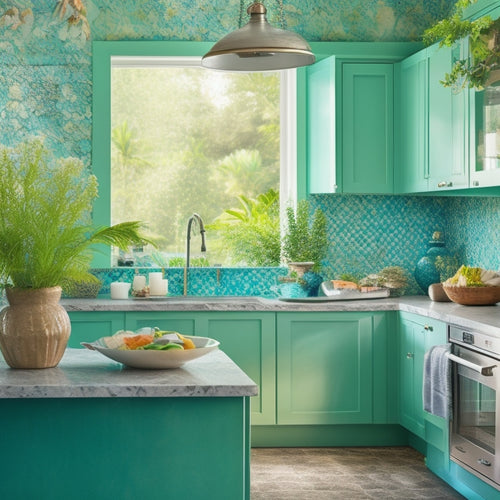
Unlocking Accessibility: Key Features of Wheelchair-Friendly Toilets
Share
Wheelchair-friendly toilets must prioritize accessibility and comfort, incorporating essential features such as wide doorways, strategically placed grab rails, and raised toilet seats for easy transfer. Additionally, thoughtful amenities like lighting design, temperature control, and adaptive technology enhance the user experience. Furthermore, emergency preparedness measures, including clear signage and easy-to-use alarm cords, guarantee user safety. A holistic approach to design, rooted in user empowerment, recognizes a broader spectrum of needs, integrating facility guidelines into the design process. As accessibility standards continue to evolve, exploring these key features is essential for creating truly inclusive spaces.
Key Takeaways
• Wheelchair-friendly toilets feature wide doorways and corridors for easy access, with a minimum clearance of 30 inches for wheelchairs to maneuver.
• Strategically placed grab rails provide support for users, enabling them to safely transfer from their wheelchair to the toilet seat.
• Raised toilet seats, typically 17-19 inches high, facilitate comfortable transfers and reduce strain on users' bodies.
• Amenities such as toilet paper, sinks, and soap dispensers should be within reach to promote independence and reduce reliance on assistance.
• Emergency alarm systems with easy-to-use cords or buttons enable users to quickly call for help in case of an emergency.
Understanding Accessible Toilet Needs
Accessible toilets are designed to cater to a diverse range of individuals who require specific features and accommodations to safely and comfortably use the facilities. From wheelchair users to individuals with mobility impairments, bowel and bladder conditions, balance issues, and invisible disabilities, each user has unique needs that must be considered.
Facility requirements must prioritize the user perspective, ensuring that accessibility standards are met through inclusive design. This involves more than just physical adaptations; it also requires a deep understanding of the challenges users face and the barriers they encounter.
Essential Features for Accessibility
Inclusive design hinges on the incorporation of specific features that enable individuals with diverse abilities to navigate and utilize toilet facilities with dignity and independence.
To meet accessibility standards, wheelchair-friendly toilets must incorporate essential features that cater to various needs. These include:
- Wide doorways and corridors for easy wheelchair access
- Grab rails strategically placed for support and balance
- Raised toilet seats for comfortable transfer and use
- Low mirrors and sinks for effortless access
- Amenities within reach when seated to promote independence
Enhancing the User Experience
In addition to the essential features that simply meet accessibility standards, there are seven key elements that can greatly improve the user experience in wheelchair-friendly toilets. These include thoughtful lighting design, comfortable temperature control, and adaptive technology integration.
Moreover, incorporating calming colors, textures, and artwork can create a soothing atmosphere, promoting user satisfaction and comfort. Design innovation and creativity can also be achieved through clever storage solutions, maximizing space while maintaining ease of movement.
Additionally, implementing smart fixtures and fittings, such as automatic soap dispensers and touchless faucets, can enhance the overall user experience. By incorporating these elements, wheelchair-friendly toilets can transcend mere accessibility, offering a truly inclusive and dignified experience for all users.
Emergency Preparedness Measures
While a well-designed wheelchair-friendly toilet can provide a comfortable and dignified experience, it is equally important to contemplate the measures that guarantee user safety in emergency situations. Emergency preparedness measures are essential to guarantee timely assistance in the event of an incident.
Key considerations include:
- Clear signage indicating the location of emergency alarms and response procedures
- Easy-to-use emergency alarm cords placed within reach
- A well-rehearsed emergency response plan in place
- Regular maintenance and testing of emergency equipment
- Staff training on emergency procedures and response times
Designing for Inclusive Spaces
Beyond the essential features of a wheelchair-friendly toilet, a truly accessible space requires a holistic approach to design, one that prioritizes comfort, safety, and autonomy for all users.
This inclusive design approach is rooted in user empowerment, recognizing that individuals with disabilities are not limited to wheelchair users, but encompass a broader spectrum of needs.
To achieve universal access, facility guidelines must be integrated into the design process, ensuring that the built environment is adaptable and flexible.
Frequently Asked Questions
Are Wheelchair-Friendly Toilets Only Required in Public Buildings?
No, wheelchair-friendly toilets are not only required in public buildings; they are also essential in private residences, especially for individuals with mobility impairments, and even in Historical landmarks, where accessibility retrofits can be challenging but necessary.
Can Accessible Toilets Be Used by People Without Disabilities?
"Surprisingly, accessible toilets aren't exclusive to people with disabilities; anyone can use them, dispelling the social stigma. In fact, they often provide personal convenience, such as extra space and amenities, making them a practical choice for all users."
Are There Any Wheelchair-Friendly Toilet Design Regulations?
Wheelchair-friendly toilet design regulations vary globally, but most countries adhere to Universal Standards and Building Codes, ensuring accessibility and safety, such as the Americans with Disabilities Act (ADA) in the United States.
How Often Should Wheelchair-Friendly Toilets Be Inspected for Damage?
In the shadows of neglect, wheelchair-friendly toilets can swiftly deteriorate, rendering them inaccessible. Regular maintenance and preventive measures are essential to guarantee these facilities remain safe and operational, safeguarding the dignity of users who rely on them.
Can Businesses Claim Tax Deductions for Installing Wheelchair-Friendly Toilets?
Businesses can claim tax deductions for installing wheelchair-friendly toilets, leveraging tax incentives to offset installation costs, thereby realizing financial benefits while promoting accessibility and inclusivity in their facilities.
Related Posts
-
Modern Glass Door Bathroom Cabinets
Modern glass door bathroom cabinets bring a sleek, contemporary charm to your space while maximizing storage. You'll ...
-

Revamp Your Home With Spring Cleaning Checklist
Spring's arrival presents a prime opportunity to transform your living space, shedding the remnants of winter's hiber...
-

Aqua-Themed Kitchen Delights: Unique and Functional Finds
Aqua-themed kitchens effortlessly blend style and serenity, creating a haven for cooking and entertaining. To bring t...

